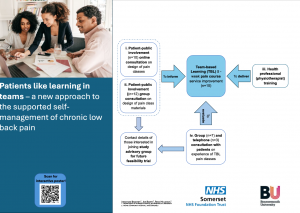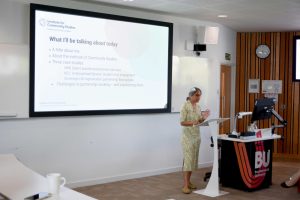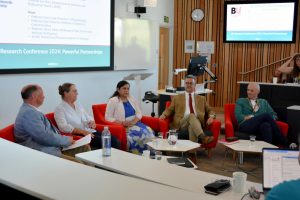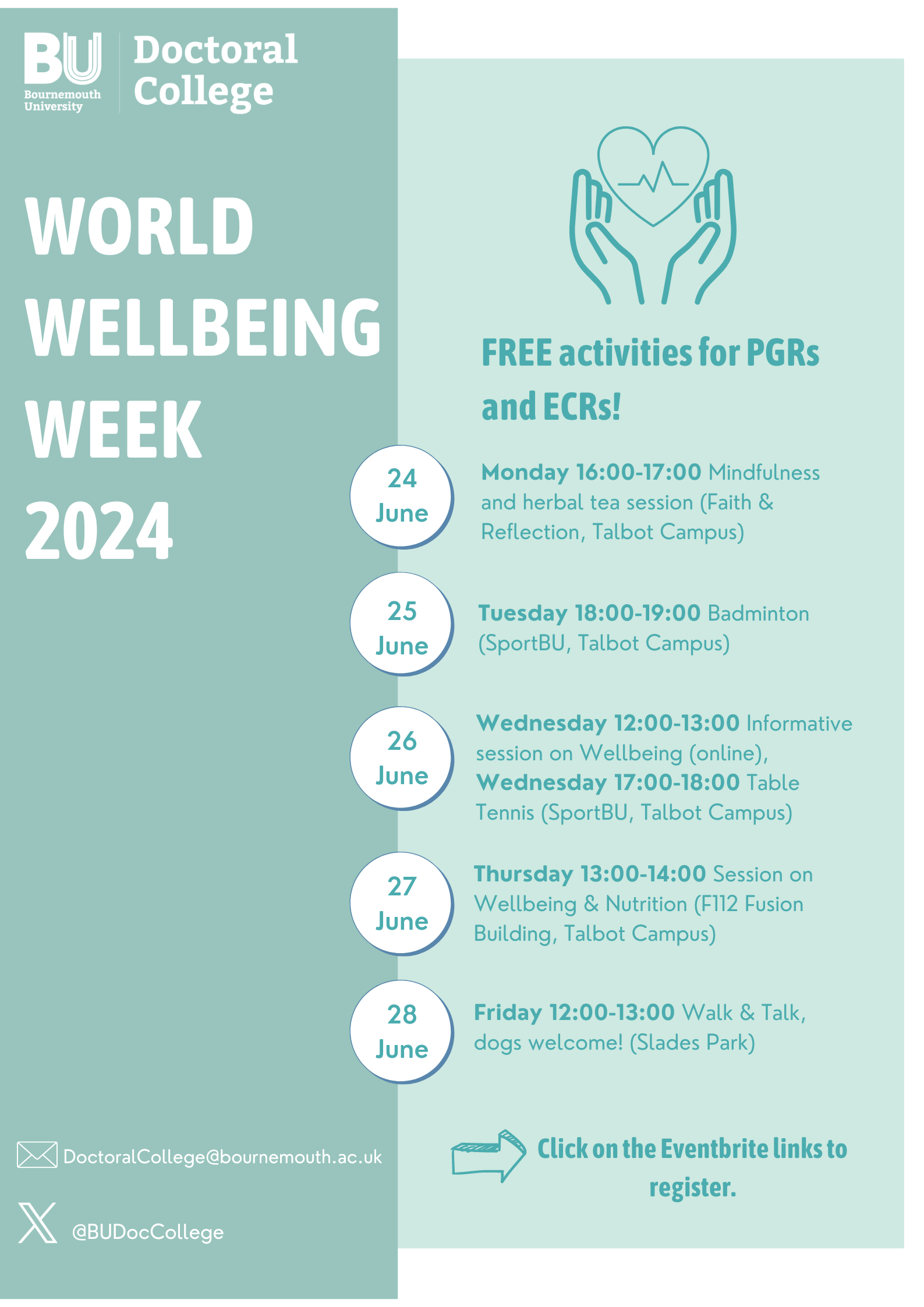
Jonny Branney and Ryan Muldoon gave a poster presentation at the Sigma 7th Biennial European Conference, BU, June 2024. Their research, in collaboration with Joe Barry, physiotherapist, musculoskeletal outpatients clinic, Frome Community Hospital, seeks to transform the way that patients with chronic (low back) pain are educated as part of supported self-management of their condition. This new approach involved patients working in teams in their 5-week pain course instead of the traditional didactic healthcare professional giving information to patients approach.
The project, which was to determine the acceptability of this approach for patients and the healthcare professional delivering the classes, was in four parts as outlined in the poster here:

Go here for interactive poster!: Useability testing TBL pain classes – Sigma 2024.pptx
- Two patient-public involvement events (i. national and online, ii. face-to-face in Somerset) were conducted to inform how the pain classes should be adapted to Team-based Learning (TBL). TBL is a form of flipped classroom whereby most learning content is engaged with outside of class while in class learners have an individual and team quiz to test the knowledge gained from their pre-reading activities, followed by problem-solving through a case study with their team. There is a good evidence base for this approach in higher education, particularly in health professions education. But this approach has not, to our knowledge, been implemented with patients in clinical practice before. We needed patient-public involvement make us aware of their perceptions and anticipate any potential pitfalls.
- iii. Training of health professional in TBL – the pioneering physiotherapist who leads the pain classes joined us at BU for two seminars to train him in the fundamentals of TBL. He was then able to adapt the pain class materials himself with regular input and feedback from Jonny Branney who is a certified Consultant-Trainer in TBL.
- iv. Group (and one-one telephone) consultation – was conducted by a research assistant who was independent of the service and team. This was conducted to find out what patients really thought about the classes and this approach to learning.
Please use the link below for a much better view of the poster which includes hyperlinks to information about each component of the study plus indicative quotes that came from participants. In short, patients like learning in teams!
Go here for interactive poster!: Useability testing TBL pain classes – Sigma 2024.pptx
This early usability testing study will support our next step which will be a feasibility trial of TBL pain classes. Get in touch if you’d like to know more and/or your have a research interest and would like to discuss collaborating: jbranney@bournemouth.ac.uk.







 UKRIO has announced details of a forthcoming Free Webinar “Science communication and research communication” Wednesday 26 June 2024 10:00 – 11:oo.
UKRIO has announced details of a forthcoming Free Webinar “Science communication and research communication” Wednesday 26 June 2024 10:00 – 11:oo. 
 There’s still time to book your place for the
There’s still time to book your place for the 














 Today’s Documentation Will Serve Tomorrow’s Justice
Today’s Documentation Will Serve Tomorrow’s Justice Up2U: New BU academic publication
Up2U: New BU academic publication New BU midwifery paper
New BU midwifery paper BU academic publishes in online newspaper in Nepal
BU academic publishes in online newspaper in Nepal Final day of the ESRC Festival of Social Science
Final day of the ESRC Festival of Social Science ECR Funding Open Call: Research Culture & Community Grant – Application Deadline Friday 12 December
ECR Funding Open Call: Research Culture & Community Grant – Application Deadline Friday 12 December MSCA Postdoctoral Fellowships 2025 Call
MSCA Postdoctoral Fellowships 2025 Call ERC Advanced Grant 2025 Webinar
ERC Advanced Grant 2025 Webinar Horizon Europe Work Programme 2025 Published
Horizon Europe Work Programme 2025 Published Horizon Europe 2025 Work Programme pre-Published
Horizon Europe 2025 Work Programme pre-Published Update on UKRO services
Update on UKRO services European research project exploring use of ‘virtual twins’ to better manage metabolic associated fatty liver disease
European research project exploring use of ‘virtual twins’ to better manage metabolic associated fatty liver disease